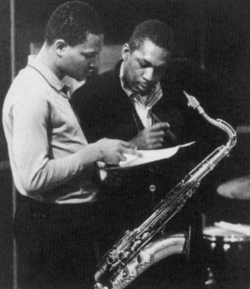You can get the sheet music to all 40 lessons here: Complete Lessons 1-40 in downloadable .pdf
- They are currently specially discounted 66%. I will be raising prices soon so if you're interested now's the time to buy.
In this week's jazz piano lesson we tackle a descending run inspired by Art Tatum and Thelonious Monk. I use the run at the end of tunes but you may also incorporate it in to normal improvisation. Both players were heavily influenced by Harlem Stride Piano of the 1920's and 30's. Check out the videos after the lesson for a brief video history of Stride Piano.
Download the Sheet Music: Jazz Piano Lesson #40: Stride Piano Run (Tatum/Monk) .pdf
Video Lesson #40:
Download the Sheet Music: Jazz Piano Lesson #40: Stride Piano Run (Tatum/Monk) .pdf
Video Lesson #40:
Here's a brief but interesting look at the evolution of Stride Piano.
James P Johnson "The Father of Harlem Stride Piano"
Here is James. P Johnson playing the Fats Waller composition "Honeysuckle Rose" in 1930. You can hear the evolution of Harlem Stride piano throughout this recording. Look for elements of both Ragtime and Boogie Woogie throughout the performance.
Teddy Wilson
Mostly know for his "Swing" piano style, Wilson was also well versed in Stride as shown in this 1939 recording of Tiger Rag.
Art Tatum
Fats Waller once said "God is in the house" when hearing of Art Tatum walking in to the club he was playing at. Listen for the descending runs that influenced the above lesson.
Thelonious Monk
Monk gives no indication in his performances in group settings that he is capable of such thrilling Stride piano playing. Check out his performance of "Nice Work if You Can Get It" below.
I will do a much more thorough review of Harlem Stride Piano in the future. Hope you enjoyed this brief but interesting summary.




